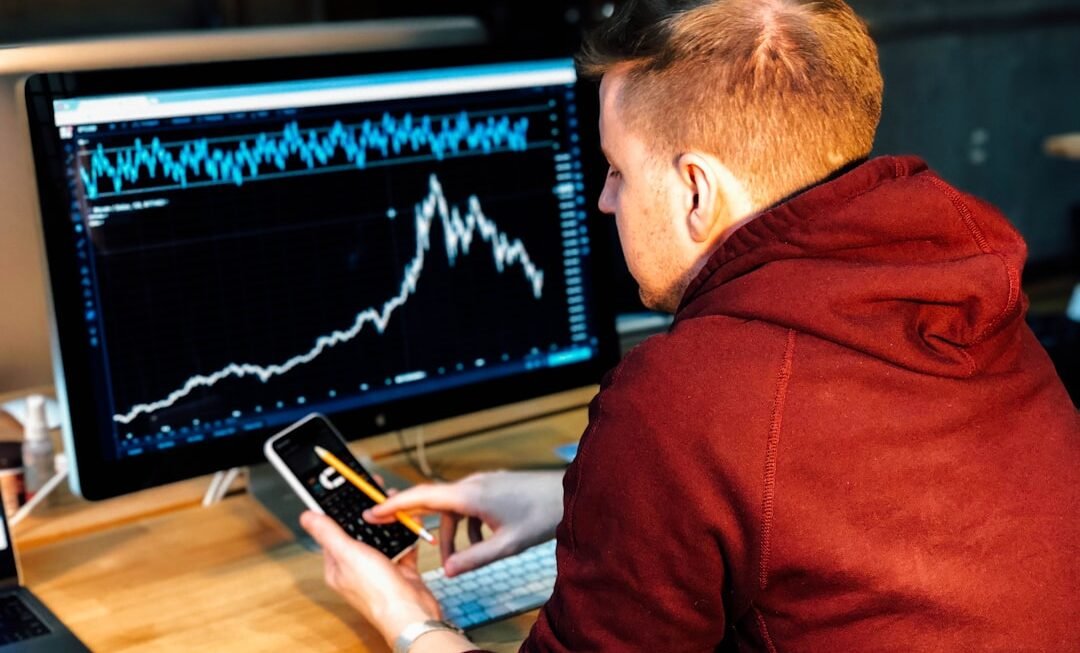The advent of the internet has revolutionized the way individuals engage in financial markets, particularly in the realms of foreign exchange (Forex) and cryptocurrency trading. Online trading platforms have democratized access to these markets, allowing anyone with an internet connection to participate. Forex trading involves the exchange of currencies, where traders speculate on the price movements of currency pairs, such as EUR/USD or GBP/JPY.
This market operates 24 hours a day, five days a week, making it one of the most liquid and accessible financial markets globally. On the other hand, cryptocurrency trading has emerged as a disruptive force in the financial landscape. Cryptocurrencies like Bitcoin, Ethereum, and countless altcoins have gained immense popularity due to their decentralized nature and potential for high returns.
The volatility inherent in these digital assets attracts traders looking for quick profits, but it also poses significant risks. As both Forex and crypto trading continue to evolve, understanding the intricacies of these markets becomes essential for anyone looking to navigate them successfully.
Understanding Risk Management in Trading
Risk management is a cornerstone of successful trading, serving as a protective barrier against the inherent uncertainties of financial markets. In both Forex and cryptocurrency trading, the potential for substantial gains is often accompanied by equally significant risks. Effective risk management strategies help traders minimize losses and protect their capital.
One fundamental principle is the concept of risk-reward ratio, which involves assessing the potential profit of a trade relative to its potential loss. A common guideline is to aim for a risk-reward ratio of at least 1:2, meaning that for every dollar risked, a trader should seek to gain two dollars. Another critical aspect of risk management is position sizing, which determines how much capital to allocate to a particular trade.
Traders must consider their overall account size and risk tolerance when deciding on position sizes. For instance, a conservative trader might risk only 1% of their total capital on a single trade, while a more aggressive trader might opt for 2% or more. By adhering to strict position sizing rules, traders can avoid catastrophic losses that could jeopardize their trading accounts.
Setting Clear Trading Goals and Risk Tolerance
Establishing clear trading goals is vital for any trader seeking success in Forex or cryptocurrency markets. Goals provide direction and purpose, helping traders stay focused amidst the noise of market fluctuations. These goals can vary widely; some traders may aim for consistent monthly returns, while others might seek to accumulate wealth over the long term.
Regardless of the specific objectives, it is crucial that these goals are realistic and achievable based on the trader’s experience level and market conditions. Equally important is understanding one’s risk tolerance, which refers to the degree of variability in investment returns that an individual is willing to withstand. Risk tolerance can be influenced by various factors, including financial situation, investment experience, and psychological disposition.
For example, a trader with a stable income and a robust financial cushion may be more inclined to take on higher risks compared to someone who relies solely on trading for their livelihood. By aligning trading goals with risk tolerance, traders can develop strategies that are not only effective but also sustainable over time.
Using Stop-Loss Orders and Take-Profit Orders
In the fast-paced world of Forex and cryptocurrency trading, stop-loss and take-profit orders are essential tools that help traders manage their trades effectively. A stop-loss order is designed to limit potential losses by automatically closing a position when it reaches a predetermined price level. This mechanism is particularly valuable in volatile markets where prices can swing dramatically in short periods.
Conversely, take-profit orders allow traders to lock in profits by automatically closing a position once it reaches a specified profit target. This strategy is crucial for ensuring that gains are realized before market conditions change unfavorably.
For example, if a trader anticipates that Ethereum will rise to $3,000 after buying it at $2,800, they might set a take-profit order at $3,000. By employing both stop-loss and take-profit orders, traders can create a structured approach to managing their trades while minimizing emotional decision-making.
Diversifying Your Trading Portfolio
Diversification is a fundamental principle in investing that applies equally to Forex and cryptocurrency trading. By spreading investments across various assets or currency pairs, traders can reduce their exposure to any single asset’s volatility. In Forex trading, this might involve trading multiple currency pairs rather than concentrating on just one or two.
For instance, a trader might choose to trade EUR/USD, USD/JPY, and AUD/CAD simultaneously. This approach helps mitigate risks associated with adverse movements in any one currency pair. In the realm of cryptocurrencies, diversification can be achieved by investing in a mix of established coins like Bitcoin and Ethereum alongside smaller altcoins with growth potential.
While Bitcoin may be considered a relatively stable investment within the crypto space, altcoins can offer higher volatility and potential returns. However, diversification should be approached with caution; over-diversifying can lead to diluted returns and increased complexity in managing trades. Therefore, finding the right balance is key to building a resilient trading portfolio.
Monitoring Market News and Events
Staying informed about market news and events is crucial for traders in both Forex and cryptocurrency markets. Economic indicators such as interest rates, employment figures, and inflation data can significantly impact currency values in Forex trading. For example, if the U.S. Federal Reserve announces an interest rate hike, the U.S. dollar may strengthen against other currencies as investors seek higher returns on dollar-denominated assets. Traders who monitor these developments can position themselves advantageously ahead of market movements. In the cryptocurrency space, news related to regulatory changes, technological advancements, or major partnerships can lead to rapid price fluctuations. For instance, announcements regarding Bitcoin ETF approvals or government regulations can trigger significant buying or selling pressure in the market. By keeping abreast of such news through reliable sources like financial news websites or social media channels dedicated to trading insights, traders can make informed decisions that align with current market sentiment.
Avoiding Overleveraging and Position Sizing
Overleveraging is one of the most common pitfalls that traders encounter in Forex and cryptocurrency markets.
For instance, using 100:1 leverage means that for every $1 in a trader’s account, they can control $100 in the market.
While this may seem appealing during winning trades, it can lead to devastating losses if the market moves against them. Position sizing plays a critical role in managing leverage effectively. Traders must carefully assess how much capital they are willing to risk on each trade relative to their account size and leverage used.
A prudent approach involves calculating position sizes based on a fixed percentage of total capital—commonly 1% or 2%. This strategy ensures that even in adverse scenarios where multiple trades result in losses, the trader’s account remains intact and capable of recovering over time.
Seeking Professional Advice and Continuous Education
In an ever-evolving landscape like Forex and cryptocurrency trading, seeking professional advice and committing to continuous education are paramount for long-term success. Many traders benefit from mentorship programs or consulting services offered by experienced professionals who can provide insights into advanced trading strategies and market analysis techniques. Engaging with seasoned traders can help newcomers avoid common mistakes and accelerate their learning curve.
Moreover, continuous education through online courses, webinars, and reading materials is essential for staying updated on market trends and developments. The financial markets are influenced by numerous factors that change rapidly; thus, ongoing education allows traders to adapt their strategies accordingly. Resources such as trading forums or social media groups dedicated to Forex and crypto discussions can also provide valuable insights from peers who share similar interests and experiences.
By fostering a mindset of lifelong learning and seeking guidance from experts in the field, traders can enhance their skills and improve their chances of success in these dynamic markets.












